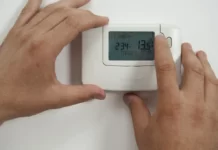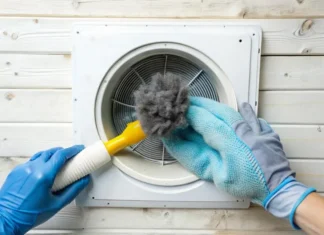Do you find yourself constantly wondering why your room feels significantly hotter than the rest of the house? It can be caused by a variety of factors, from inadequate insulation and air circulation to direct sunlight exposure or imbalances in the HVAC system. In this discussion, we will explore the potential reasons behind your room’s excessive heat. We will provide insights on how to address this problem effectively, allowing you to achieve a more balanced and comfortable indoor environment.
Reasons to Know Why is my room so hot Compared to Rest of House
There are several reasons that your room might be hotter than the rest of the house. We will go through a few of them.
1. Direct Sunlight
Your room might be receiving direct sunlight due to which the overall room temperature increases. There is absolutely nothing that you can do about the sun. But more on this point later.
2. Closed Windows & Door
If you keep your windows and doors closed all the time, the temperature will start to rise. Therefore, it is better to open the windows and the door to allow the air to circulate.
3. Electric Appliances
Laptops, computers, lamps, and other electric appliances produce a lot of heat. If you are using them too much, they will heat up the room.
4. Old Windows
Over the years, we have come a long way in terms of technology and innovation. If your home is old, chances are that you are using old style windows. If that’s the case, you’ll need to replace the windows.
5. Poor Insulation
It is a common cause of hot room temperatures. It does not matter if you crank the AC to the maximum because hot air will find its way back inside the home.
6. Air Vents
If there is any blockage in the air vents, it impedes the airflow. Hence, the room will start warming up. A blocked air vent can cause problems with the entire duct system.
Now, let us focus on fixing a hot room in house.
How to Fix a Hot Room in House
There are several things that you can try to bring the temperature down in a room. While reading the points, you might be thinking that they are nothing special. Well, you are right. These are simple tips that will 100% ensure that a room stays cool. Therefore, do not ignore them thinking that they sound too simple. Let us start.
1. Open the Windows
Many people keep the windows closed to prevent insects from coming in or for security purposes. We recommend that you keep the windows open as it will help keep the temperature low. If you are worried about insects or security, there are loads of other ways to deal with the situation.
2. Limit the Electronic Appliances
We know that using the computer or laptop in your room is convenient, especially at night. However, we advise against using the laptop at night. Instead, focus on improving your sleep routine. Lastly, set up your laptop or computer outside your room as it will considerably improve the temperature. If there are other appliances, turn them off when they are not in use.
3. Replace the Windows
There are windows that are specifically made to keep away heat. So, even if your room faces direct sunlight, the windows will prevent the room from heating up. If you cannot opt for new windows, you can buy window tints. The tints will block the heat and offer privacy at the same time.
4. Clean the Air Ducts
First, make sure that there is nothing blocking the air ducts. Secondly, clean the ducts to ensure optimal air flow.
5. Turn Off the Lights
Lights create heat. So, only use lights that are absolutely necessary.
6. Buy an AC
If the above tips do not work, you can invest in an AC. There are a lot of variants including portable versions. Buy the one that fits your budget and room space.
Wrap Up
In conclusion, understanding why is my room so hot compared to rest of house is crucial in creating a comfortable living environment. Factors such as inadequate insulation, sun exposure, inefficient air circulation, HVAC system imbalances, proximity to heat-generating sources, and structural issues can contribute to this temperature disparity. By implementing measures such as enhancing insulation, providing effective shading, improving airflow, making HVAC adjustments, and strategically placing heat-emitting appliances, you can create a more harmonious and pleasant room temperature.












